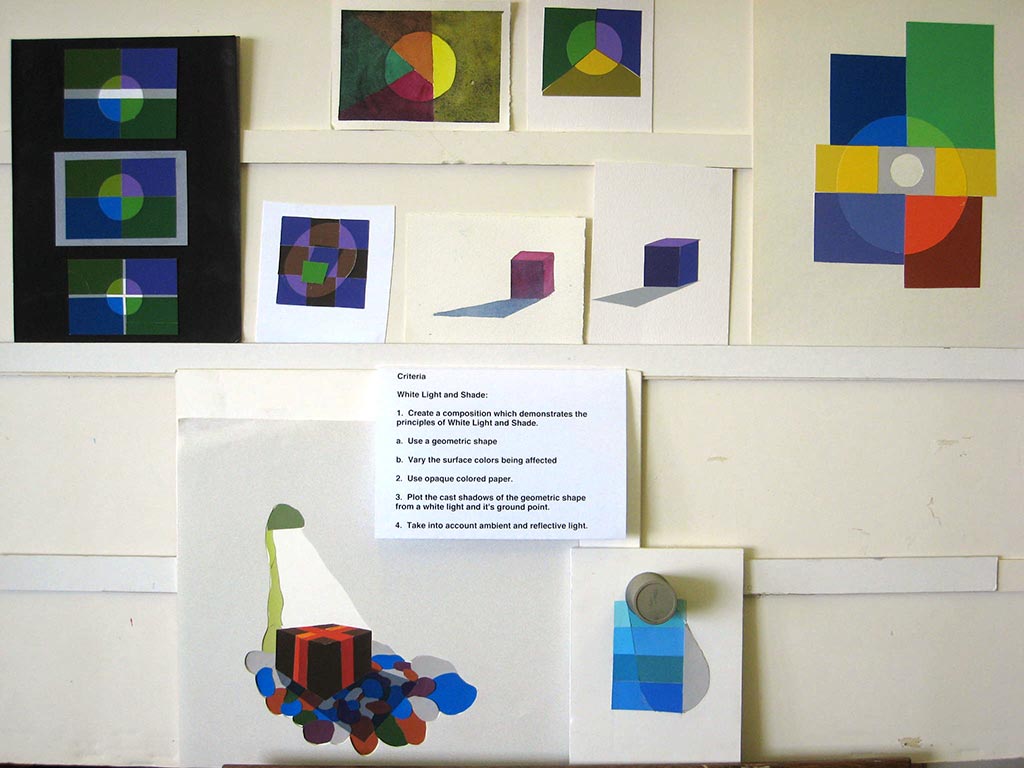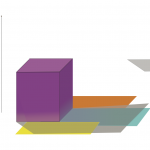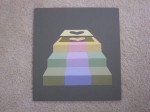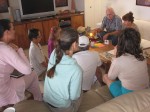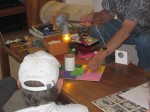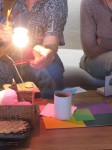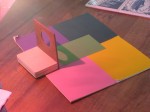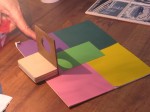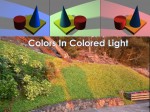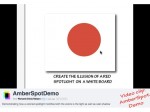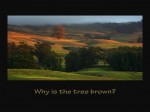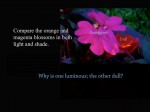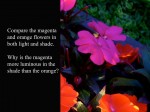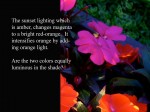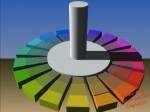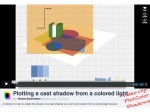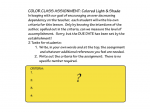Homework
- Create your own assignment and criteria for a colored light illusion, as described below.
- Answer the questions on page 2 of the PDF “Critique: Course assessment, Week 8” and come prepared to share some of your answers. (Also available as a Word doc.) Email them to Karen if you’d like to share any private or detailed feedback.
- Rework or refine any previous assignments.
- Look for positive and negative examples to share.
[gview file=”https://dicknelsoncolor.com/wp-content/uploads/2013/10/Week8Critique2p.pdf”]
Class recap
Critique – reworked assignments 1-6
Reworked assignments demonstrated a clearer understanding of the concept under study. This was a valuable way to solidify one’s learning.
Review
We observed one of Dick’s abstract paintings, looking for application of concepts covered in this course.
Critique – Assignment 7, White light
Each person wrote their own assignment and criteria for creating an illusion of white light and shadow. People reported spending a lot of time on this assignment.
- Joelle C. Perz shared her white light study
- White light study by Joelle C. Perz
This week’s new concept: Colored light
The color of a shadow from a colored light is the complement of the light color. White light, black shadow; yellow light, blue shadow; pink light, green shadow; green light, pink shadow. Dick demonstrated this with a light set up to shine on an arrangement of several colors, to show how the colors were modified under the light and shadow. Colors could be either enhanced or dulled by the light and by the shadow. A warm-colored light (yellow or pink) enhanced colors containing yellow or magenta, and dulled cooler colors, those containing cyan. The cool blue or green shadow, respectively, of those warm lights, enhanced cool colors and dulled warm ones. These effects can be clearly seen in the photos below.
Because everything in a room or scene is affected by colored light, it is a powerful tool for unifying a work.
The slide presentation showed photographic examples of how sunset light and shade affect colors in nature, which were discussed in depth. Video tutorials showed how to create both 2D and 3D illusions of colored light and shadow. You have to have the shadow to perceive the light, and they must both affect more than one color.
- Colored light demo
- Yellow light, blue shadow
- Yellow light, blue shadow
- Pink light, green shadow
- Green light, pink shadow
- Pink light, green shadow
- White light, black shadow
Class materials
Demonstrating how a colored spotlight modifies both the colors in the light as well as cast shadow
A tutorial on how to create the illusion of a cast shadow on a form and colors from a colored light source.
[gview file=”https://dicknelsoncolor.com/wp-content/uploads/2013/10/Forms-in-lights-updated.pdf”]
[gview file=”https://dicknelsoncolor.com/wp-content/uploads/2013/10/ColoredLightShade.pdf”]
[gview file=”https://dicknelsoncolor.com/wp-content/uploads/2013/10/ProducingColoredLite.pdf”]
[gview file=”https://dicknelsoncolor.com/wp-content/uploads/2013/10/CreatingColorLite.pdf”]
[gview file=”https://dicknelsoncolor.com/wp-content/uploads/2012/05/Drawing.pdf”]

